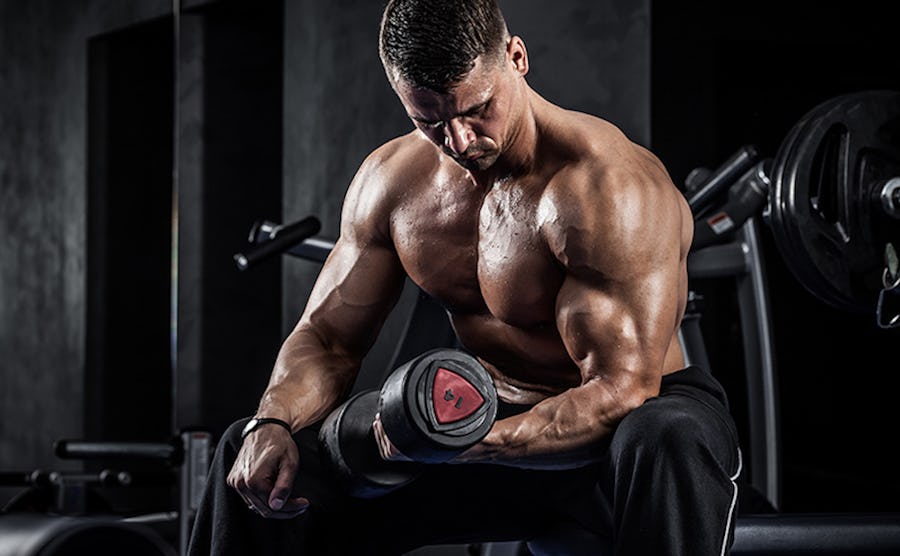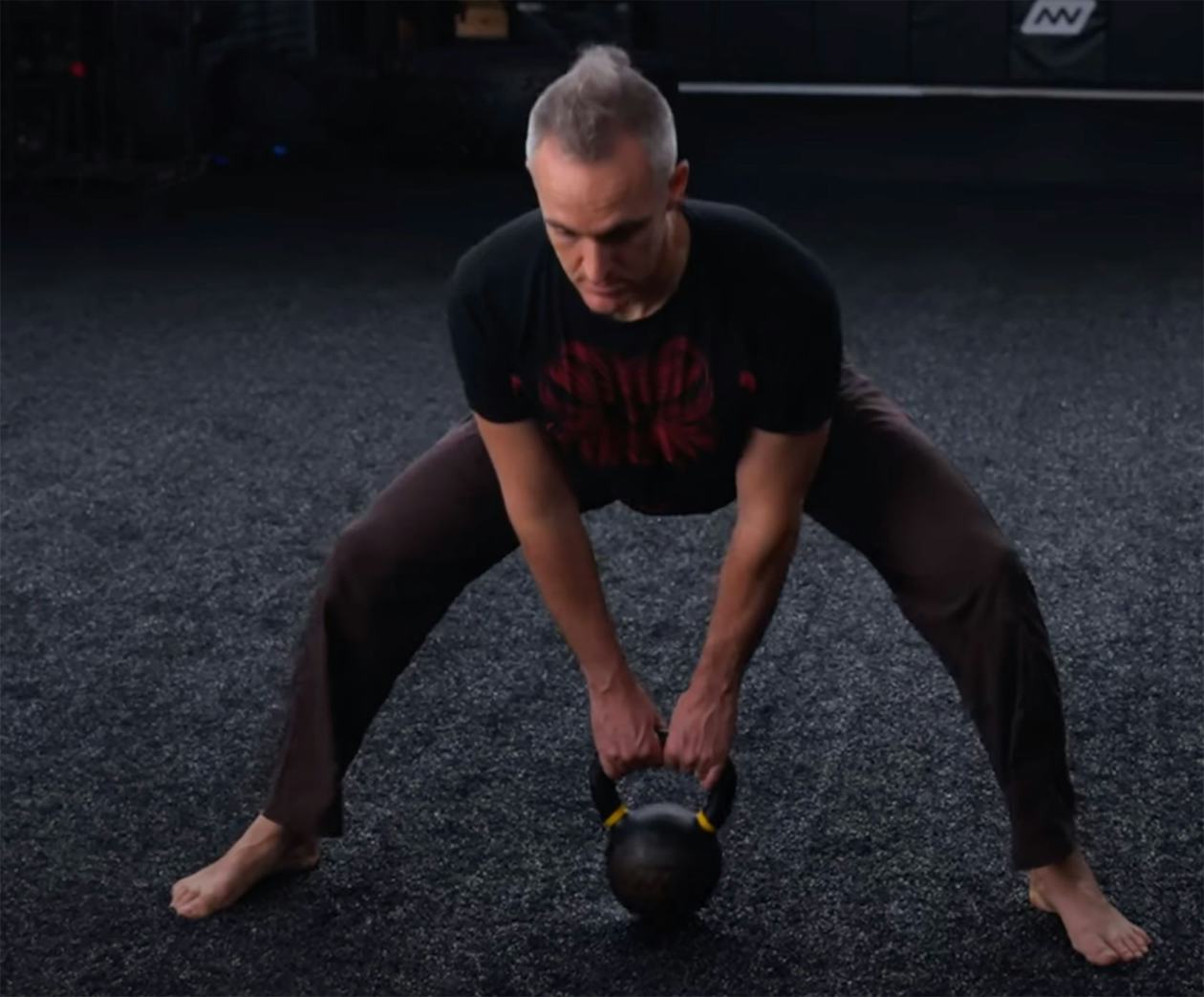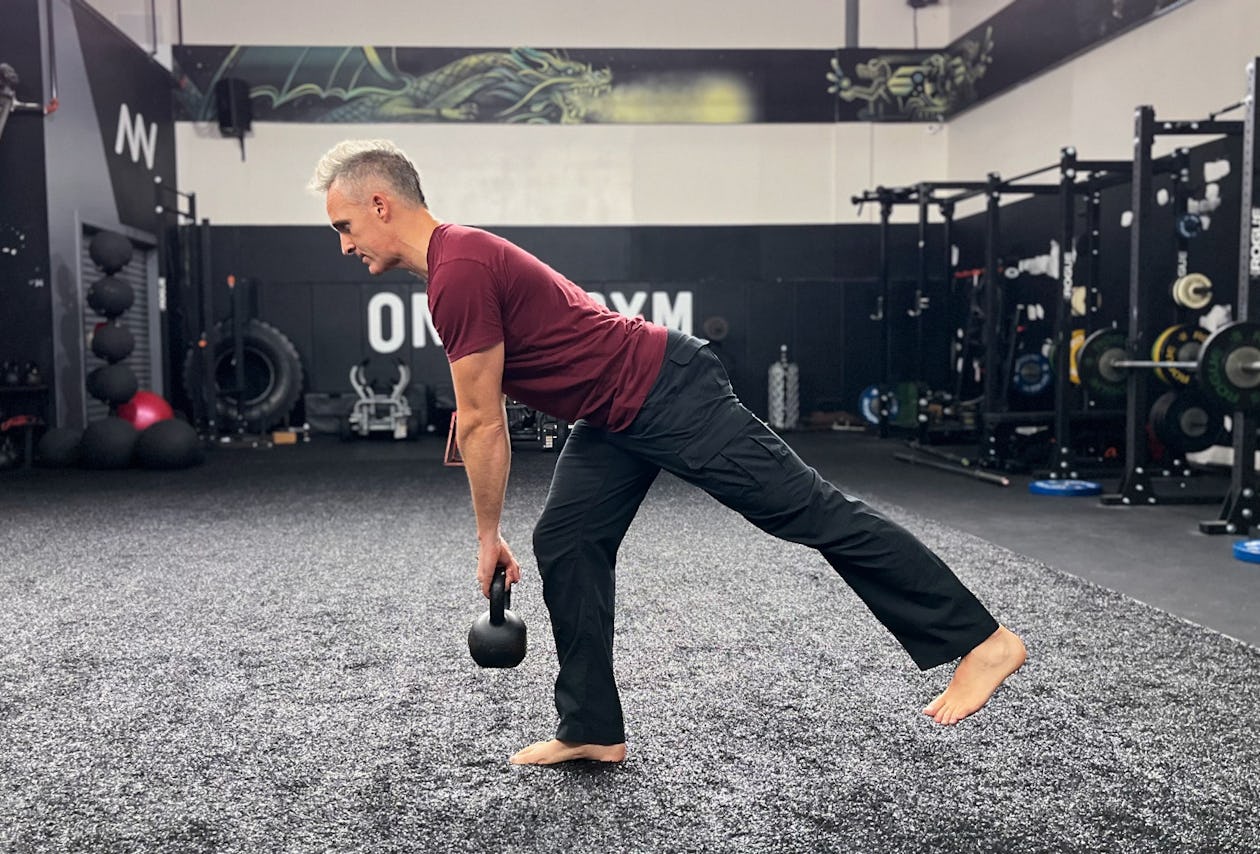Muscle Pump Training Summary
– Begin your workout with an exercise that primes the muscles you’re going to focus on that day for growth. Ex: leg curls before a leg workout and face pulls at the start of a push/pull session.
– Do 2–3 sets of 25–40 reps, or simply aim to work for 45–70 seconds per set. Rest between sets should be 20–45 seconds.
– For the last exercise in your workout, choose a lift that places no demand on your stabilizers so you can focus solely on the target muscles without fear of breaking form when fatigued. Ex: chest-supported row or double-banded hip thrust.
– Finish the workout with a stretch lasting 20–60 seconds for the muscles you pumped.
Getting a pump is probably the main reason people train with weights. While it can take weeks to see actual muscle growth from a resistance-training program, a pump lets you look swole right away, so even “bros” who don’t have the discipline to follow a long-term plan can still will themselves to hit a workout now and then. Arnold said it’s the most satisfying feeling you can get in a gym, and even likened the sensation of a pump to having an orgasm.
Hell, you don’t even have to know what you’re doing to get a good pump. Do a few moderately-challenging sets without too much rest in between and before you know it you’re filling out your T-shirt. But here’s the thing: getting a pump isn’t just for vanity, and it doesn’t have to be just a byproduct of a good workout, either. Science is beginning to confirm what bodybuilders have known for years—that pumping up your muscles is highly effective for eliciting real and lasting muscle growth. Therefore, learning how to get a pump efficiently, and maximizing its effects, should be a regular part of your workouts if your goal is to build muscle—especially if you want to do it without the use of heavy weights to minimize the risk of injury.
The Science of Swole
The technical term for the pump, as you’ll see in exercise science literature, is “cellular swelling.” When you lift weights, blood rushes to the muscles to supply them with the nutrients they need to perform. The intense muscle contractions produced by your reps temporarily compress the veins that take blood out of the muscles and back to the heart. As a result, extra blood gets trapped in the muscles, swelling them to greater than normal size. You may shrink back down to your old self shortly after your post-workout shower, but that doesn’t mean bigger muscles—permanently bigger muscles—aren’t on their way. Getting a good pump foreshadows your physique to come.
According to 2013 research published in Strength and Conditioning Journal, “there is a paucity of resistance training studies directly investigating the effects of acute cell swelling (i.e., the pump) on muscle hypertrophy [muscle gain]. However, basic research provides a compelling reason to believe that exercise-induced cell swelling enhances hypertrophic gains.”
The pump may lead to muscle growth by stretching muscle cell membranes. The theory goes that these membranes perceive the stretch as a threat to their structural integrity, and respond by growing bigger. So if you’ve ever laughed at a buddy who only “chased the pump” in his workouts, he may be getting the last laugh now.
How To Get A Muscle Pump
If you’ve read up on strength training, you may know the textbook set and rep prescriptions for building muscle. By most accounts, performing 3–6 sets of 8–15 reps is the most effective protocol for putting on size. Conventional thinking assumes that lower rep ranges would do more for pure strength gains, while higher rep counts mainly benefit endurance.
But a look at the training of numerous bodybuilders, both steroid-enhanced and “natty,” clearly shows otherwise. These guys often train with sets of 25 reps or more. Furthermore, they use tricks like slowing down their rep speed and avoiding lockout to keep constant tension on the muscles, which can make their sets last even longer and feel a hundred times more taxing than the typical “3 sets of 10.” This approach also leads to a more dramatic pump.
Maximizing a pump requires moderate or even very light weights done for high reps (or a long set duration), followed by short rest periods.
While you probably enjoy pumping up your chest, some muscles lend themselves better to the pump than others, and the pecs aren’t muscles that respond best to targeted pump training. The muscles that do are the ones that act as postural stabilizers, and therefore have a greater capacity for endurance, because they work almost constantly to keep your body in alignment. These muscles include the rear delts, upper back, spinal erectors, and glutes.
While they certainly can pump up, muscles like the quads, hamstrings, and pecs aren’t meant to be worked with a maximum-pump set and rep scheme—at least not with free weights—so training them that way can be risky. Imagine trying to perform high-rep sets of barbell back squats with little rest in between. Your form will probably break down quickly, and you could hurt your back or knees as a result. If you try to bench press for high reps, you run the same risk of pressing out of your groove and hurting your shoulders. The only way to do high-rep, long-duration sets for these muscle groups safely is to use machines (leg extension and pec-deck, for example), which is certainly a viable option if maximizing hypertrophy is your goal. But if you train at home, or your workouts are limited to free weights, you’ll have to pump the quads, hams, and pecs with more conventional set and rep schemes.
Apart from the postural muscles, the shoulders, arms, forearms, calves, and abs—all of which are made to perform long-duration work—also respond well to pump training. I shake my head when I see people going heavy on curls, breaking form and swinging the weight up. I can get a skin-tearing pump using a mere 12.5 pounds just by squeezing my biceps at the top and keeping tension on them by not locking out my elbows at the bottom, as you can see in the video below.
Incline Biceps Curl
Here’s an example of an exercise I like to do for glutes, called the double-banded hip thrust.
Double-Banded Hip Thrust
I wrap a band around my knees and stretch another one across my hips and perform a simple hip extension (glute bridge). Having the band around my knees forces me to keep my lateral hips activated while I’m working the glutes for more muscle recruitment (I have to keep forcing my knees out to keep tension on the band). Doing 30 reps of these gives a whole new meaning to the expression “light a fire under your ass.”
Muscle Pump Training Sets, Reps, and Rest
Generally speaking, pump work should be done for 2–3 sets of 25–40 reps, or last 45–70 seconds per set. Rest between sets should be 20–45 seconds.
If you want even more work, and aren’t interested in doing any heavy lifting in your workout, you can do your warm-up sets for your pump exercise in this fashion as well. In other words, do an additional two or three sets for high reps, performed slowly, and ramping up the weight gradually until you reach a load that provides the greatest challenge you can handle for 25–40 reps, or 70 seconds.
In order to discourage racing through your sets so you achieve the requisite time under tension (the amount of time your muscles spend working during the set), you can experiment with the technique you use to perform your reps. Each one should be done more slowly and methodically than you’re probably used to. You can avoid locking out your elbows on biceps curls, for example, to keep full tension on the muscles without letting the joints support the weight. You can squeeze the muscles at the point of peak contraction too, such as at the top of a curl or the lockout of a hip thrust, to slow things down further and emphasize your mental connection to the muscles. Decades of anecdotal evidence supports the idea that actively thinking about the areas you’re training while working them, called the “mind-muscle connection,” improves their development. Over time, gaining greater neural control over your muscles can translate to greater strength gains when doing heavy lifts—you’ll be able to integrate all your muscles, big and small, for a more coordinated effort.
When To Pump Up
There are two times in a workout when pump exercises are best performed: as an extension of your warm up, preparing the muscles you’re going to focus on that day for heavier poundage, and at the end of a session as a finisher (where you burn the muscles out to finish them off, flooding them with blood as a result).
For example, on a lower-body day, you can prime your posterior chain with a hip thrust or leg curl. You’ll expedite blood flow into your glutes and hamstrings and lubricate your hip joints with more synovial fluid, as well as begin the release of a cascade of anabolic hormones that will support muscle gains. For an upper-body session that centers around pressing or rowing movements, exercises like the face pull, band pull apart, or straight-arm pulldown will do the trick. Choose only one lift as a primer.
Banded Face Pull
At the end of the workout, once the heavy or more technical training is complete, it helps to blow out the muscles for a few sets of high reps to maximize blood flow to them. The caveat at this point, however, is to choose exercises that are very safe. At the tail-end of a workout, once you’ve accumulated fatigue, you don’t want to risk getting sloppy and getting hurt. You should have no fear of your stabilizer muscles giving out so that you break form or lose postural control. Choose lifts that allow you to concentrate on working hard without much concern for losing a safe spine position and paying for it with injury. For the upper body, a chest-supported row (chest-down on an inclined bench) would be perfect. For me, the double-banded hip thrust is a staple for closing out my lower-body days.
After all your lifting is done, end the workout by stretching the muscles you just pumped. For the upper body, for instance, you can hang from a pullup bar or stretch your pecs in the bottom of a pec fly. For the lower body, bend your knee and grasp your instep to stretch your quads, or stretch your calves against a wall. Stretching continues the occlusion effect of the pump training—cutting off blood flow out of the muscles—to promote further gains. Simply put, the lifting pumps the blood in, and the stretching will keep it there for longer. Hold the stretches for 20–60 seconds. Be warned, with your muscles already engorged, they’ll feel extra stiff, so the stretch will be intense, borderline painful. Tough it out, but don’t force yourself into a range of motion you’re not ready for.
More Benefits Of Muscle Pump Training
As you’ve probably guessed, performing reps as I’ve described—at a slow pace, with squeezes and constant tension—is going to limit the amount of weight you can use. It may limit it to tiny dumbbells or machines with just a plate or two loaded on them. That’s totally fine.
The growth stimulus here doesn’t come from load as much as it does increased blood flow and the stretch it puts on your muscle cell membranes, so don’t let your ego ruin your workout.
The lack of weight is actually a good thing in many respects. If you have joint pain or other injuries from going too heavy for too long, you now have a way to build your muscles without risking further stress to your connective tissues. Many muscular injuries (pulls, strains, tears) happen where the contractile units inside the muscle meet the tendon that the muscle attaches to. Pumping the muscles with light weights poses little risk to this area and can actually strengthen the connective tissues to be more resistant to injury.
Finally, learning to perform precise reps without momentum and tolerate the burn that results will build mental fortitude that carries over to other aspects of training, sports, and life where you have to push yourself to the limit. With pump training, you can go to failure and test your mettle but with almost no risk of injury or accidents.



